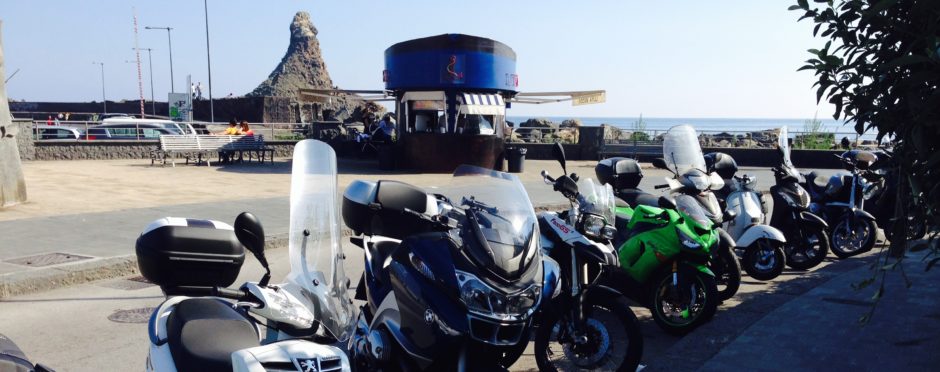Brief History of Motorcycle Training and Countersteer
I hatched the idea to improve motorcycle training when I realized almost all motorcycle accidents happen because riders lack the skills they need to control their machines. I looked at the history of motorcycle training and discovered the specific type of training we as a group need has not been successfully implemented yet.
Over the years, I’ve been out on the road with fellow riders when they’ve crashed or run wide and departed the roadway. I’ve seen riders misjudge speed and lose control due to excessive, incorrect braking. All of the riders I’ve been with when trouble came along were graduates of the Motorcycle Safety Foundation (MSF) courses. They’ve been trained, but don’t really understand with is happening on the road and how it relates to motorcycle control.
Using my experiences in the aviation world, I developed a concept to add risk management based, high-speed training to the choices available to the public and pitched it to the Washington State Motorcycle Safety Committee back in 2010. The pitch was well received, but there is a process that needs to be completed before full support from the State is granted. At this meeting, I met Sargent Wayne Davis of the Lynnwood, Washington Police Department. He’s since moved to Snohomish County. He’s a fully certified motorcycle instructor for the State of Washington and trains police how to ride motorcycles as motor officers. He has seen his share of motorcycle accidents and believes most could be prevented through better training. Wayne is interested in helping bring motorcycle training to the next level and threw me his full support. He is one of the founders of Countersteer Motorcycle Training.
So far, Wayne has contributed his time and experience helping develop the training program we plan to use.
We at Countersteer have always thought it would be great to have a place to train that is totally controlled. Like a race track, but built for training not racing. The first round of engineering is complete for a facility that moves the rider through corners of increasing difficulty.
This idea has been enthusiastically received by anyone willing to listen. Problem is, at this point it’s just an idea that requires a bit of capital to get going. Once up and running, cash flow is ample to allow the business model to work perpetually.
Why was standardized motorcycle training developed anyway?
A few years ago, I had lunch with David Hough, author of Proficient Motorcycling, in Port Townsend, Washington. I’d intended to pick his brain and enjoyed hearing about his life experiences as they related to motorcycle riding and training. One of the things I took away from our meeting was his story about the founding of the MSF back in the early ‘70s. The Arab Oil Embargo was the indirect impetus for change. His description of the history of the evolution of motorcycle training in the United States seemed highly plausible.
Back in 1974 when cars got 5-7 MPG and gas lines were long, the motorcycle industry was flourishing. People wanted an alternative form of transportation and looked to motorcycles to deliver. But when folks stared getting killed and seriously injured in huge numbers, the country’s politicians decided to take action.
Congress put pressure on the Motorcycle Industry to offer a solution. The Motorcycle Industry Council formed the Motorcycle Safety Foundation and developed the basis of the standardized training we use today. Everyone was happy. Politicians answered their constituencies’ calls for safety and the motorcycle industry was left alone to sell motorcycles.
Problem is, not much has changed with respect to traffic related injury and death for motorcycle riders. The trend still shows an increase in deaths over time. The data shows a problem, yet the solution evades.
Our solution is to offer instruction in a real world environment, at speed on a closed course. This is not a cheap, parking lot approach to training motorcyclists. But we need to engage the problem of high injury and fatality rates more directly. The economic impact to our nation is too high to support things as they are. In the real world there are no cones. You don’t ride in a parking lot, except when you reach your destination. So let’s train the way we ride.
